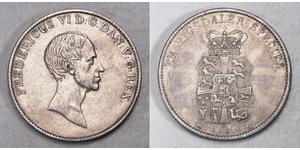(sold for $182.0)
Medallist: P. Droz. References: Feuardent 7989. var. Mint Year: 1766 (countermarked after the revolution of 1790!) Denomination: Medal (Jetton) - Louis XVI / Chamber of Commerce of Sens Condition: Numerous small contact-marks, othewrise a nice AU with a beutiful revolutionary XF countermark! Diameter: 31mm Weight: 8.15gm Material: Silver
Obverse: Draped bust Louis XVI left. Medallist´s signature (P. DROZ) below. Revolutionary countermark ("Fasces") in left field! Legend: LUDOV . XVI . REX CHRISTIANISS : / P. DROZ Reverse: Seated togate female figuer of Justice, holding scales and sword walking right. Exergue: INSUPER ALAS ADDIDIMUS Exergue: JUGE ET CONSULS DE SENS I766
The French Revolution was a period of radical political and societal change in France that began with the Estates General of 1789 and ended with the formation of the French Consulate in November 1799. Many of its ideas are considered fundamental principles of liberal democracy, while phrases like Liberté, égalité, fraternité reappeared in other revolts, such as the 1917 Russian Revolution, and inspired campaigns for the abolition of slavery and universal suffrage. Its values and the institutions it created dominate French politics to this day.
The causes are generally agreed to be a combination of social, political and economic factors, which the existing regime proved unable to manage. In May 1789, widespread social distress led to the convocation of the Estates-General, which was converted into a National Assembly in June. The Assembly passed a series of radical measures, including the abolition of feudalism, state control of the Catholic Church and extending the right to vote.
The next three years were dominated by the struggle for political control, exacerbated by economic depression and social unrest. External powers like Austria, Britain and Prussia viewed the Revolution as a threat, leading to the outbreak of the French Revolutionary Wars in April 1792. Disillusionment with Louis XVI led to the establishment of the First French Republic on 22 September 1792, followed by his execution in January 1793. In June, an uprising in Paris replaced the Girondins who dominated the National Assembly with the Committee of Public Safety, headed by Maximilien Robespierre.
This sparked the Reign of Terror, an attempt to eradicate alleged "counter-revolutionaries"; by the time it ended in July 1794, over 16,600 had been executed in Paris and the provinces. As well as external enemies, the Republic faced a series of internal Royalist and Jacobin revolts; in order to deal with these, the French Directory took power in November 1795. Despite a series of military victories, the war caused economic stagnation and political divisions; in November 1799, the Directory was replaced by the Consulate, which is generally seen as the end of the Revolutionary period.
em>.
Louis XVI or Louis-Auguste de France (Versailles, 23 August 1754 - Paris, 21 January 1793) ruled as King of France and of Navarre from 1774 until 1791, and then as King of the French from 1791 to 1793. Suspended and arrested during the Insurrection of 10 August, he was tried by the National Convention, found guilty of treason, and executed by guillotine on 21 January 1793. He was the only king of France to be executed.
Although Louis was beloved at first, his indecisiveness and conservatism led some elements of the people of France to eventually view him as a symbol of the perceived tyranny of the Ancien Regime. After the abolition of the monarchy in 1793, the new republican government gave him the surname Capet, a reference to the nickname of Hugh Capet, founder of the Capetian dynasty, which the revolutionaries wrongly interpreted as a family name. He was also informally nicknamed Louis le Dernier (Louis the Last), a derisive use of the traditional nicknaming of French kings. Today, historians and French people in general have a more nuanced view of Louis XVI, who is seen as an honest man with good intentions, but who was probably unfit for the herculean task of reforming the monarchy, and who was used as a scapegoat by the revolutionaries.
t, he longed for a reassuring and motherly presence, which he tried to find in the intimate company of women, something for which he was much criticized both during and after his life.
Only 1$ shipping for each additional item purchased!

|
Posted by:
anonymous 2021-11-24 |
1 Thaler Kingdom of Bavaria (1806 - 1918) Silver Ludwig II o ...
group has 119 coins / 117 prices
⇑
1 Speciedaler Denmark Silver Frederick VI of Denmark (1768 -1839)
group has 8 coins / 6 prices
⇑







-300-150-zw8KqUpYfnUAAAFiIEis7yGW.jpg)








